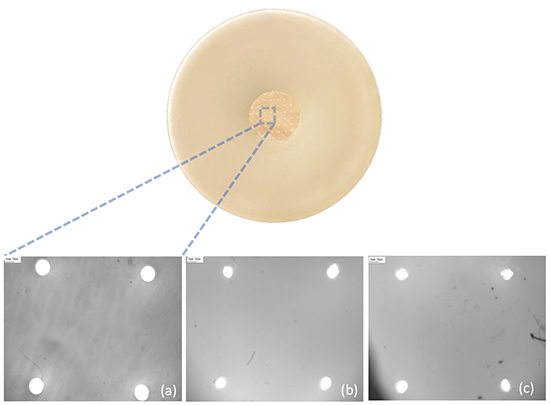Significance
The cosmetic industry has long faced criticism over the use of animal testing to evaluate product safety and efficacy. There is an urgent need for the development of ethical alternatives to animal testing which are both more humane and can be more reliable and cost-effective. These alternatives are gaining traction as technology advances and societal values shift towards greater respect for animal welfare. Some of the current ethical alternatives to animal testing within the cosmetic industry are the use of in vitro testing where cosmetic products are tested on cell cultures in a laboratory setting, rather than on live animals. These in vitro tests have been shown to accurately assess skin irritation. Moreover, advances in biotechnology have made these tests increasingly sophisticated, allowing for complex human tissue models that mimic the skin, eyes, and other tissues. Furthermore, computer modeling and simulations which use databases of known chemical information to predict the toxicity and health effects of substances without live testing can analyze molecular structures and predict a compound’s potential to cause harm, significantly reducing the need for animal testing. Another innovative method is using synthetic human skin that can replicate many of the properties of real skin. These models can be used to test irritation, corrosion, and other skin reactions to cosmetics without involving animals. All these alternatives are part of a growing trend towards more ethical and humane methods in the cosmetic industry. To this account, a new study published in the International Journal of Molecular Sciences and conducted by Rocío Guerle-Cavero and Professor Albert Balfagón-Costa from the Universitat Ramón Llull in Spain, the authors investigated the anti-aging properties of elastin (EL), hydrolyzed collagen (HC), and two vegan collagen-like products (Veg Col) within a tri-layered chitosan membrane system. This innovative study aimed to provide an alternative to animal testing, to several industries food and beverage, cosmetics and pharmaceutic by using a biomimetic approach to simulate some human skin’s characteristics. The researchers developed a tri-layered membrane system using chitosan, a natural biopolymer, crosslinked with sodium tripolyphosphate (TPP). They designed the membrane, with the inclusion of EL, HC, and Veg Col in different layers to represent the skin’s natural composition. Afterward, they incorporated EL, HC, and two types of vegan collagen-like products into the chitosan membranes. These active ingredients were introduced into the membranes’ two inner layers to simulate their presence in the superficial papillary and deep reticular dermal layers of human skin.
The researchers performed several experiments to assess the membranes’ elasticity, hydration, moisture retention, and pore reduction capabilities. These properties are important for determining the effectiveness of anti-aging active ingredients or products. They also compared the effects of incorporating EL, HC, and Veg Col into either all three layers of the membrane or just the two inner layers. This approach allowed the researchers to understand how the placement of these active ingredients or products affects the membrane’s properties. The authors demonstrated that the tri-layered chitosan membranes is sensitive to the concentrations of EL, HC, and Veg Col. This sensitivity was vital for determining the optimal concentrations of these active ingredients or products for desired skin-like properties. Their study found that EL, HC, and the vegan collagen-like products could effectively mimic some of the anti-aging properties of human skin. Specifically, the membranes showed improved elasticity, hydration, moisture retention, and pore reduction compared to control membranes without these active ingredients. Moreover, the effects of the active ingredients or products varied depending on their placement within the membrane layers. For example, incorporating the active ingredients or products into the two inner layers often resulted in enhanced properties compared to their distribution across all three layers. This finding suggests that the strategic placement of active ingredients or products within biomimetic models can influence their effectiveness. According to the authors, the research demonstrates the potential of using tri-layered chitosan membranes as a viable alternative to animal testing for evaluating the efficacy of cosmetic, nutritional, injectable products or topical drugs. This biomimetic approach could help cosmetic, food and pharmacological companies develop new products with anti-aging properties without relying on animal testing.
It is noteworthy to mention, exploring vegan collagen-like products in the study highlights the growing consumer trend towards plant-based and vegan cosmetics. Additionally, the authors successfully demonstrated that these plant-based alternatives can mimic the anti-aging properties of traditional animal-derived collagen and elastin which will stimulate the development of more sustainable, ethical, and potentially allergen-free products. Overall, the research work by Guerle-Cavero and Balfagón-Costa is a significant step in the development of ethical, accurate, and effective methods for testing cosmetic, nutritional, injectable products or topical drugs, which will pave the way for wider adoption of biomimetic models in the cosmetic, pharmaceutical or food industries, and promotes more humane and scientifically sound product development practices.

Reference
Guerle-Cavero R, Balfagón-Costa A. Study of Elastin, Hydrolyzed Collagen and Collagen-like Products in a Tri-Layered Chitosan Membrane to Test Anti-Aging Skin Properties. Int J Mol Sci. 2023;24(13):11016. doi: 10.3390/ijms241311016.
 Medicine Innovates Medicine Innovates: Delivering innovations in medicine to the world for better health and prosperity
Medicine Innovates Medicine Innovates: Delivering innovations in medicine to the world for better health and prosperity


